Close to Gyantse fort in Tibet, at the Palkhor Chode Monastery, an old Chinese man approached me with curiosity. I reciprocated with a smile to help break the ice.
Old Chinese Man : “You are wearing a turban. Are you a Sikh?”
Me : “Indeed and I am surprised you are able to recognize a Sikh in this remote part of the world.”
Old Chinese Man : “Sikhs are no strangers to this region. In the past they have led many military expeditions on the Tibetan plateau with reasonable success.”
Me : “Yes indeed. I am aware that in the year 1841, under the leadership of Maharajah Ranjit Singh of Punjab, General Zorawar Singh’s forces came deep in Western Tibet. Having started the Ladakh (small Tibet) campaign in 1834, after Ranjit Singh's death in 1839, the forces continued deeper into Tibetan plateau. I also know that at Taklakot in Tibet, there exists a Chorten (memorial) of General Zorawar Singh.”
Old Chinese Man : “You do know that history of year 1841 expedition of the Sikh kingdom into Tibet. Well the Sikhs entered again, but this time with British, in the year 1904.”
I had only heard about General Zorawar Singh’s expedition to Tibet in 1841 but what was the Chinese man’s reference to the entry in 1904? This conversation created a spark of curiosity, leading me to research the following three old books to gain better insight into Lietunant Younghusband’s expedition to Tibet in 1904 with the 23 and 32 Sikh Pioneer regiments.
1) With Mounted Infantry inTibet by Major Ottley
2) India and Tibet by Sir Francis Younghusband
3) Waziristan to Tibet by Cyril Lucas
In early 1900's the “Great Game” being played in Asia had resulted in expansion of British across India, under the banner of East India Company. In the North of Asia, Czars of Russia were becoming ambitious to expand their reach into the Pamir mountain ranges, getting them closer to India. British secret services were getting an indication of an alliance being forged between the Tibetans and the Russians. There were reports of European breeds of dogs spotted on the Tibetan plateaus, which could have only come on land through Russia. Should the Russian reach extend into the Himalayan plateau, it would be too dangerous for British India.It meant the political war between British, French and Russians that was being engaged in Europe could be fought on the grounds of India.
In light of this development, the British had to nullify the potential Russian advance into Tibet.
Lietunant Colonel Sir Francis Edward Younghusband, with regiments of 23 Sikh Pioneers and 32 Sikh Pioneers, entered Tibet from Sikkim in the year 1904. They were successful in conquering the Gyantse Fort (which was built around 12th century) and made it their base from where they led further successful expeditions to Karo La pass (5,010 meter) and Lhasa. These may sound just names but having personally traveled to the heights around Karo La pass, due to thinness of air, I found it hard to carry my two heavy cameras. One can only imagine the feat for the soldiers at these heights, having to carry their weapons and backpacks.
The success of this expedition resulted in a treaty between British India and Tibet, resulting in the weakening the Russian aspiration of expansion. Thereafter the British Indian forces subsequently moved back from the Tibetan plateau.
Along the way from Lhasa to Gyantse, one can still find remains of stone fortifications built by 23 and 32 Sikh Pioneer regiments as they advanced on the plateau. I spotted many of these bricked outposts while driving from Lhasa to the Western front of Tibet.
History quotes Hannibal’s crossing of the Alps, in 218 BC, to invade imperial Rome as one of the most celebrated achievement of any military force in the ancient warfare. The Alps are pygmies in comparison to the advances that had to be made from the plains of India to Tibetan plateau, crossing the formidable Himalayas. Only soldiers with a selfless grit could have achieved this feat in a short time frame, returning back to the plains of India safely. They just had to make a point that the plains of India will not entertain any move for European wars to be bought to the sub-continent.
Let me share the pictures that I took of Gyantse Fort in Tibet and very old sketches of Sikh soldiers in action on the Tibetan plateau. These sketches featured in LIFE magazine in early 1900’s. I stumbled on them as I embarked to satisfy the curiosity that developed after the discussion with the Chinese man at Gyantse Fort.

Gyantse Fort
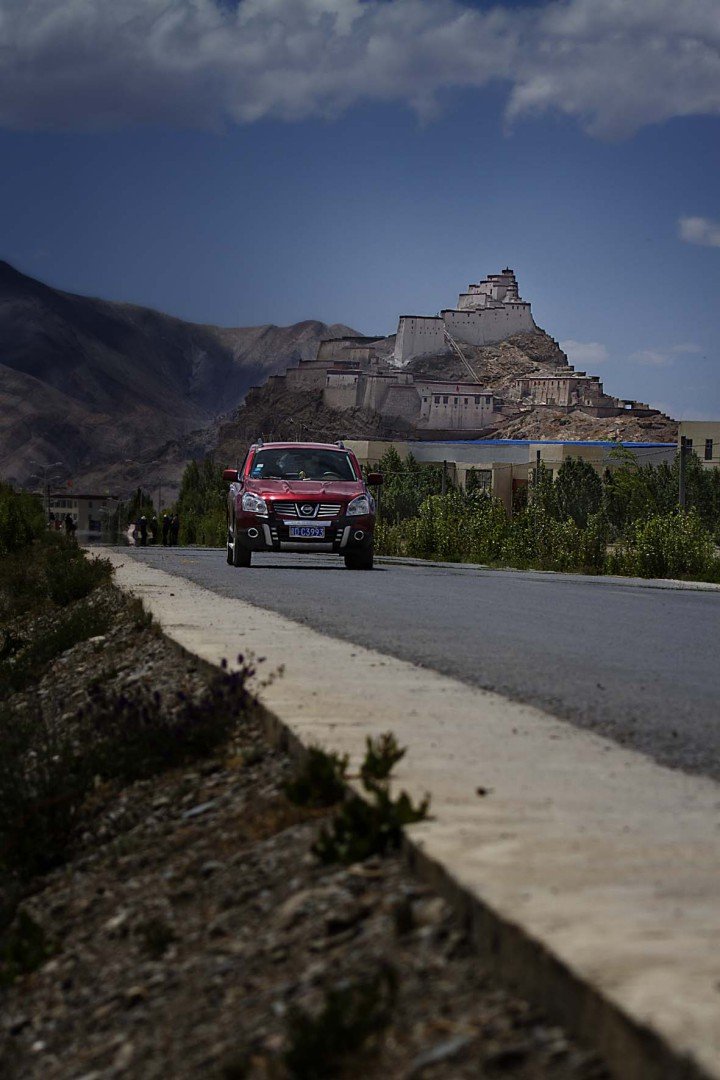
Gyantse fort
(Photos by Amardeep Singh – July 2012)
Sketches of Lietunant Colonel Sir Francis Edward Younghusband’s Tibet expedition with 23 Sikh Pioneers and 32 Sikh Pioneers.

Sikh soldiers march through Lhasa.

Sikh soldiers in action at Gyantse Fort.

Sikh soldiers in action at Gyantse Fort.
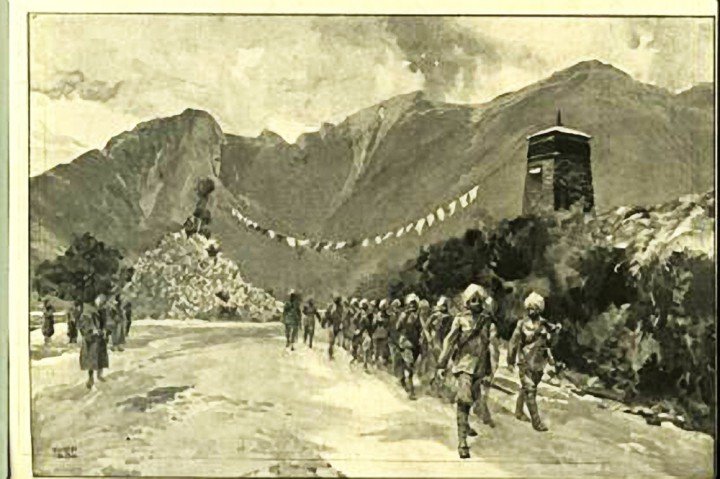
Sikh soldiers marching on Tibetan plateau.
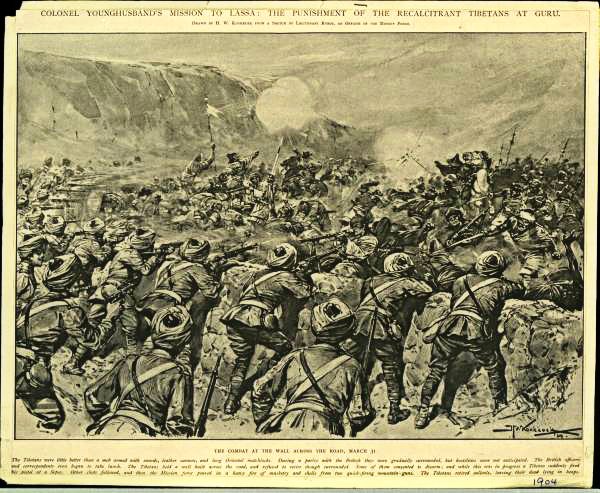
Col Younghusband’s forces in action at Guru in Tibet.

Sikh soldiers clearing ammunition at Gyantze Fort after its occupation.
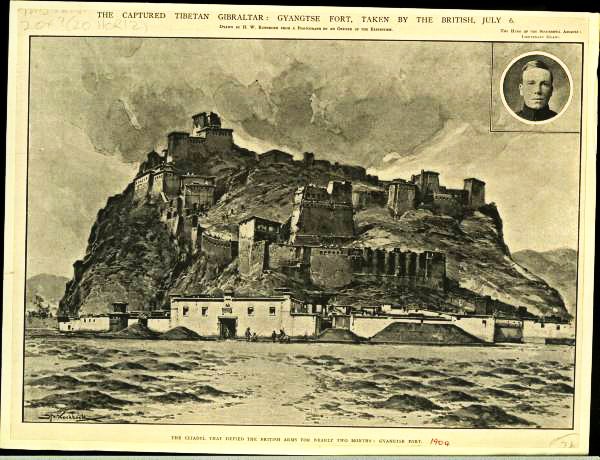
Gyantse Fort after its capture. Plate dated July 6, 1904.

Soldiers in action during their attack on Gyantse Fort.

Soldiers in action during their attack on Gyantse Fort.

Sikh soldiers clearing their way in thick snow, during the march to Gyantse fort.

Indian mounted Infantry on the Tibetan plateau.
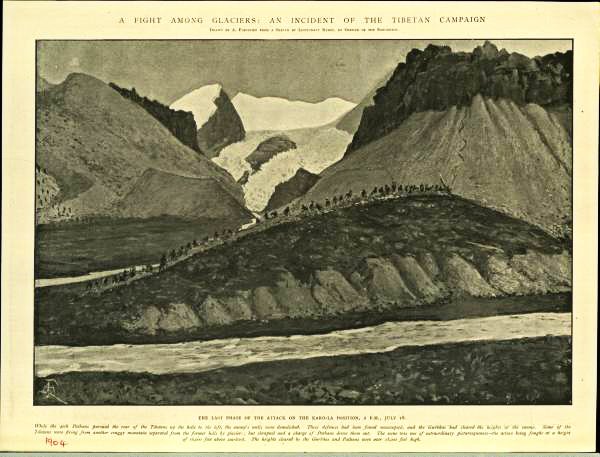
A battle fought on the Glaciers of the Tibetan plateau.
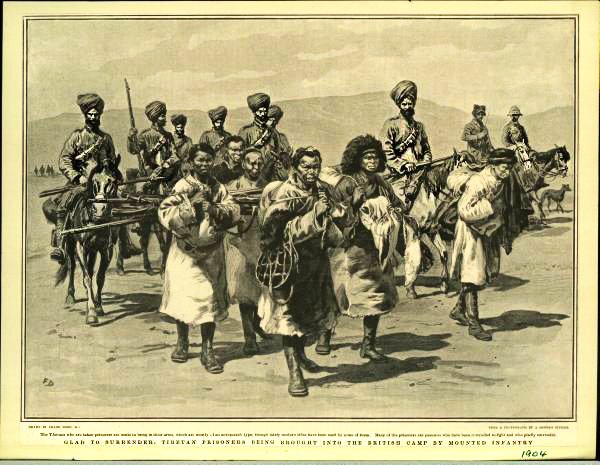
Surrendered Tibetan soldiers being escorted to the camp.

